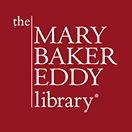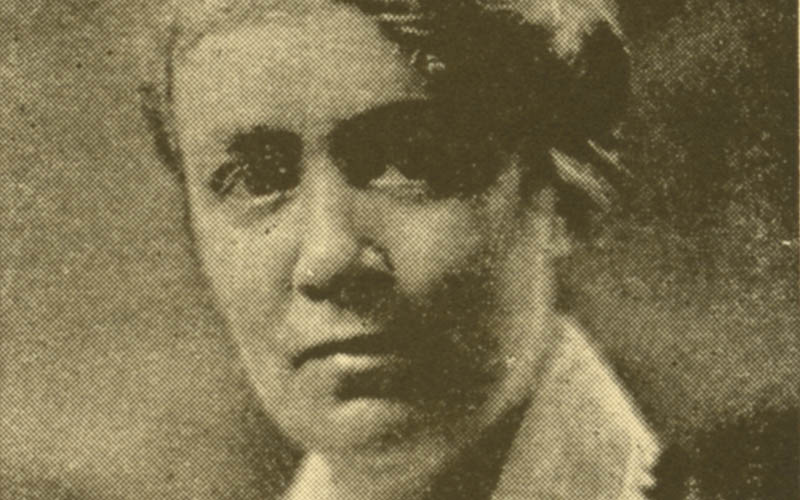Women of History: Florence Alden Gragg
Photograph of Florence Alden Gragg, Professor of Latin, Smith College Yearbook Class of 1928, Courtesy of Smith College Special Collections. Click to see a larger image
Florence Alden Gragg (1877–1965) was a historian and scholar of classical languages. At a time when women struggled to gain equal rights to schooling, her post-secondary achievements and respected contributions to her field of study place her among the pioneers in women’s education.
She was born in the Roxbury neighborhood of Boston, Massachusetts. Her mother, Eldora Gragg, was a Christian Science practitioner and teacher, among 12 of Mary Baker Eddy’s pupils whom she chose to form The First Church of Christ, Scientist, in 1892. Mrs. Eddy also appointed Eldora as the first woman Reader of The Mother Church; she served as Second Reader from 1895 to 1902.
While she did not formally join The Mother Church until 1945, we know that Christian Science was prominent in Florence’s upbringing. She attended an outdoor address to 2,500 church members that Eddy gave at her home in Concord, New Hampshire, on July 5, 1897.1 The Christian Science leader included a self-deprecating nod to the new generation that 20-year-old Florence represented, admitting that she was “not enough the new woman of the period for outdoor speaking….” In spite of those reservations, Eddy’s voice “carried across the lawn to all but the farthest listeners.”2 That address may have resonated with the scholarly Florence, especially Eddy’s assurance that “from the falling leaves of old-time faiths men learn a parable of the period, that all error, physical, moral, or religious, will fall before Truth demonstrated…. [Christian Science] consecrates and inspires the teacher and preacher….”3
Florence attended Boston’s Girls’ Latin School and graduated summa cum laude from Radcliffe College, where she studied classical and modern European languages. Bryn Mawr College then awarded her a scholarship to study art, sculpture, topography, and architecture for eight months at the American School in Athens, Greece.4 After finishing those studies, she travelled extensively in Europe before starting work back in the United States as a secondary school teacher.
Gragg was an early example of a woman who proved her work equal to that of her male colleagues. Her first position in Dover, New Hampshire, earned a starting annual salary of $500—slightly above the average of $480 for a female teacher at that time (equivalent to about $13,000 in 2017).5 When in 1902 she moved on to the all-girls Balliol School in Utica, New York, her annual salary increased to $600 (plus board)—equal to the national average salary for a male teacher.6 This achievement of financial parity may have been due to her teaching skills and scholarship.
Gragg returned to Radcliffe in 1905, where she identified as a Christian Scientist on her employment questionnaires. In 1906 she completed her master’s degree in Classical studies, and earned her doctoral degree in 1908—just six years after the institution had awarded its first PhD.7
Gragg immediately began her post-secondary teaching career at Vassar College, before joining the faculty at Smith College in 1909. She would spend the next 33 years at Smith, as Professor of Latin. There she translated many Latin texts into English for the first time, including Latin Writings of the Italian Humanists (1927), An Italian Portrait Gallery (1935), and The Commentaries of Pius II (1937-1957). The contemporary scholars who later retranslated the Commentaries of that medieval pope dedicated their work to Gragg, observing that “[her] translation has stood as the definitive—indeed, the only—complete English edition of the work. Although much of her text has been altered…readers will recognize the traces of her elegant and judicious prose.”8
Florence Alden Gragg’s life of scholarship—during decades when women were gradually gaining access to higher education—is notable in relation to Christian Science. At a time when comparatively few Americans had college degrees, Mary Baker Eddy’s views on higher education for her followers, both women and men, are illustrated in an exchange she had with one of them who had been told secular education would conflict with the purity of religious practice. Eddy was asked if she agreed. “ ‘No,’ she said with emphasis, ‘I wish every student I have had a college education. I want them to be able to talk intelligently with educated thinking people everywhere.’ ” 9
- Eldora O. Gragg to Mary Baker Eddy, 1 July 1897, 074.18.014.
- Robert Peel, Mary Baker Eddy: The Years of Authority (Boston: The Christian Science Publishing Society, 1982), 108.
- Mary Baker Eddy, Miscellaneous Writings 1883-1896 (Boston: The First Church of Christ, Scientist, 1896), 251, 253.
- Radcliffe College student files, 1890-1985; job questionnaire, July 1, 1905. RG XXI, Series 1, box 49. Radcliffe College Archives, Schlesinger Library, Radcliffe Institute, Harvard University, Cambridge, MA.
- United States Department of Interior. Annual Reports for the Fiscal Year Ended June 30, 1902: Report of The Commissioner of Education. Washington: U.S. G.P.O, 1903, LXXXI.
- Ibid.
- Radcliffe College student files, 1890-1985; Florence Alden Gragg to Mary Coes, 12 May 1909. RG XXI, Series 1, box 49. Radcliffe College Archives, Schlesinger Library, Radcliffe Institute, Harvard University, Cambridge, MA.
- Margaret Meserve and Marcello Simonetta, eds. Pius II Commentaries, vol. 1 (Cambridge, MA: Harvard University Press, 2003), xxiii.
- Baker, Anna B. White, Reminiscence File, “Happy Memories of Mary Baker Eddy,” 29.


